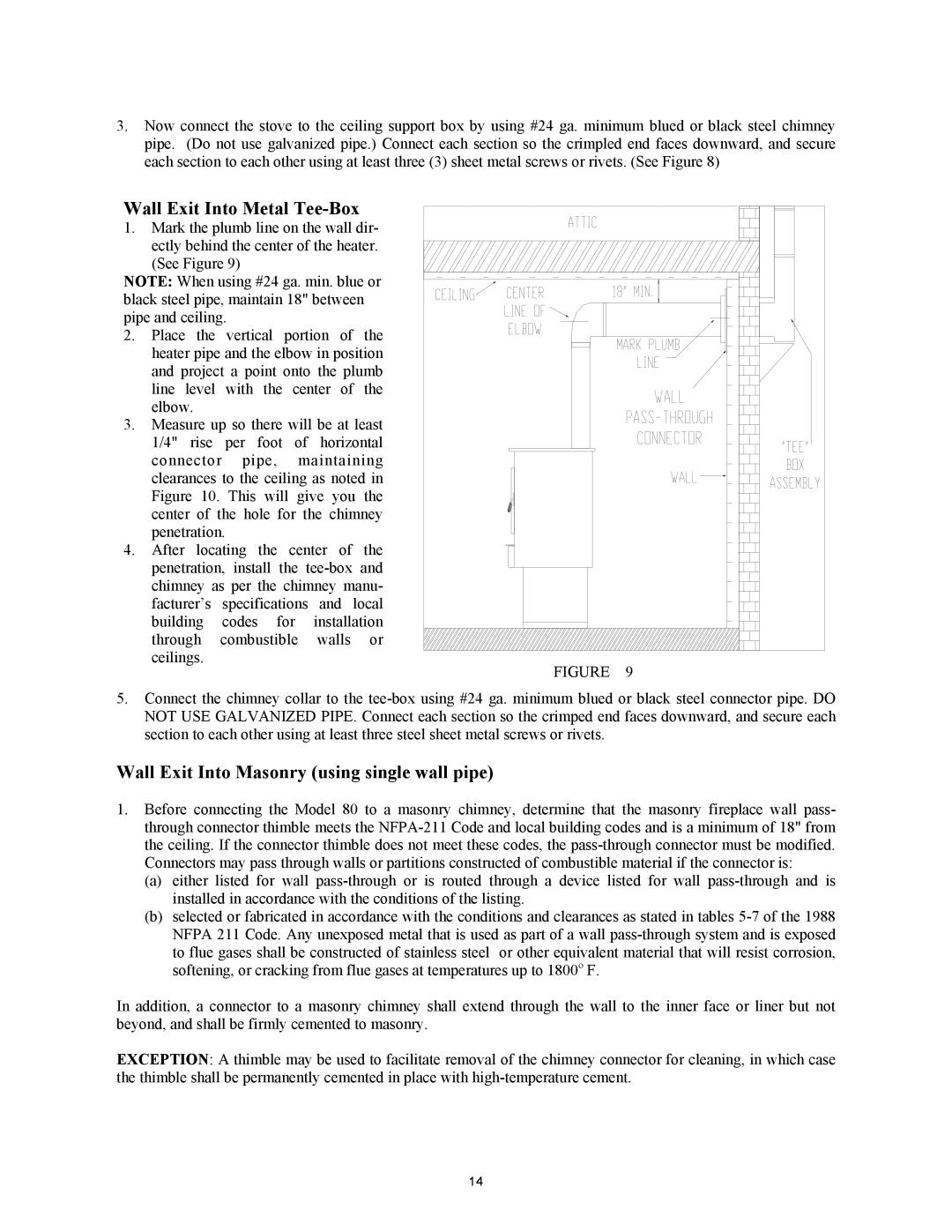
3.Now connect the stove to the ceiling support box by using #24 ga. minimum blued or black steel chimney pipe. (Do not use galvanized pipe.) Connect each section so the crimpled end faces downward, and secure each section to each other using at least three (3) sheet metal screws or rivets. (See Figure 8)
Wall Exit Into Metal Tee-Box
1.Mark the plumb line on the wall dir-
ectly behind the center of the heater. (See Figure 9)
NOTE: When using #24 ga. min. blue or black steel pipe, maintain 18" between pipe and ceiling.
2.Place the vertical portion of the heater pipe and the elbow in position and project a point onto the plumb line level with the center of the elbow.
3.Measure up so there will be at least 1/4" rise per foot of horizontal connector pipe, maintaining clearances to the ceiling as noted in Figure 10. This will give you the center of the hole for the chimney penetration.
4.After locating the center of the penetration, install the
FIGURE | 9 |
5.Connect the chimney collar to the
Wall Exit Into Masonry (using single wall pipe)
1.Before connecting the Model 80 to a masonry chimney, determine that the masonry fireplace wall pass- through connector thimble meets the
(a)either listed for wall
(b)selected or fabricated in accordance with the conditions and clearances as stated in tables
In addition, a connector to a masonry chimney shall extend through the wall to the inner face or liner but not beyond, and shall be firmly cemented to masonry.
EXCEPTION: A thimble may be used to facilitate removal of the chimney connector for cleaning, in which case the thimble shall be permanently cemented in place with
14
